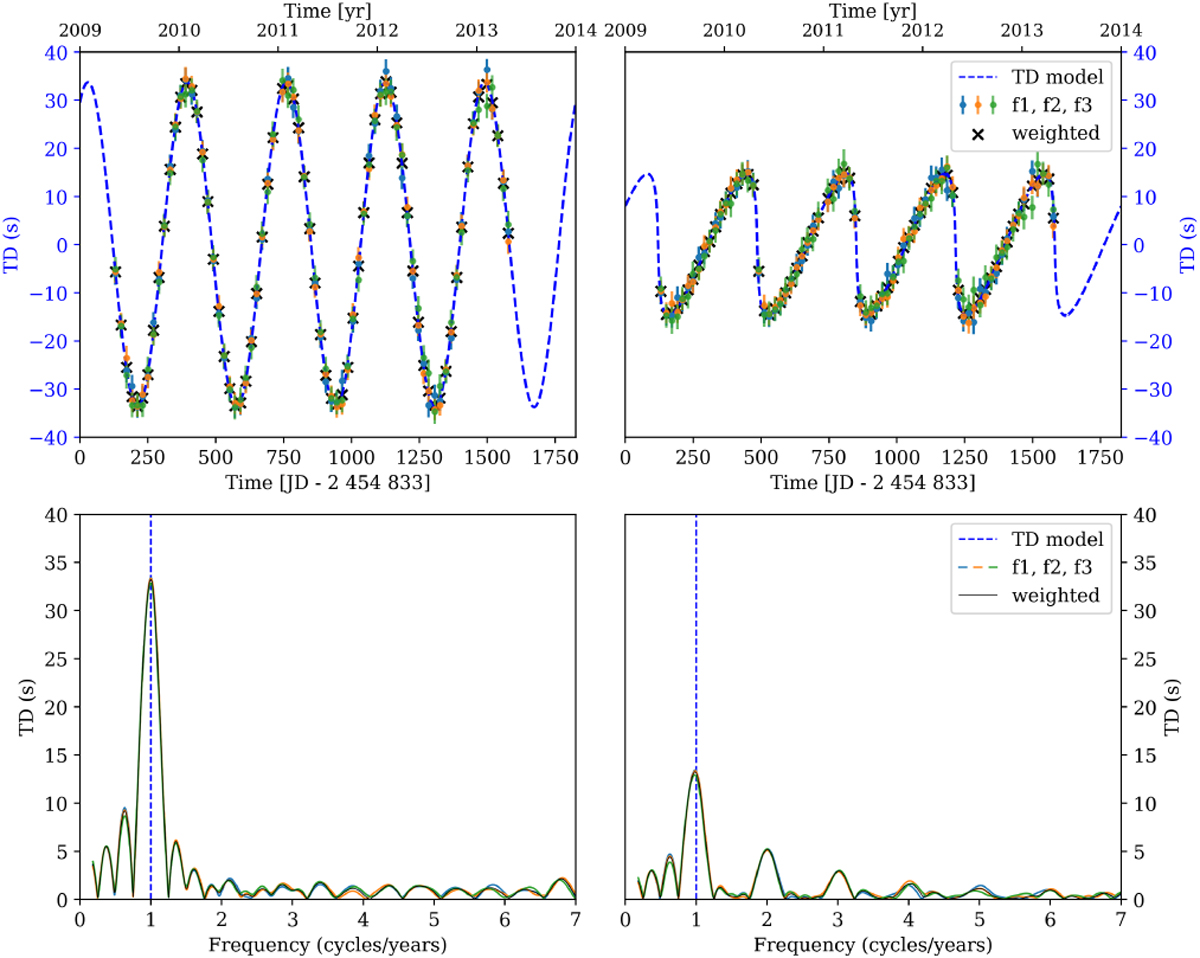Fig. 3

Download original image
Simulation of a companion in a circular (e = 0; left column) and eccentric (e = 0.9; right column) orbit as if observed by the Kepler Space Telescope. The following parameters were used: P = 1 yr, ϖ = 0, Mpulsating = 1.8 M⊙, and Mcompanion = 0.1 M⊙. This led to a semi-amplitude of around 34 s in the circular case (using Eq. (15)) and around 15 s in the eccentric case (using Eq. (17)). Upper panel: simulated time delay plot. Lower panel: Fourier transformation of the time delays. One can clearly see the relative increase of the first harmonic at two cycles/year for the eccentric case.
Current usage metrics show cumulative count of Article Views (full-text article views including HTML views, PDF and ePub downloads, according to the available data) and Abstracts Views on Vision4Press platform.
Data correspond to usage on the plateform after 2015. The current usage metrics is available 48-96 hours after online publication and is updated daily on week days.
Initial download of the metrics may take a while.


